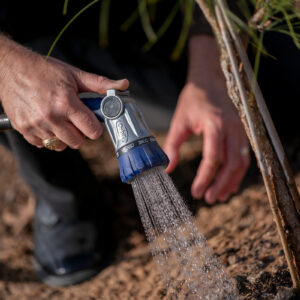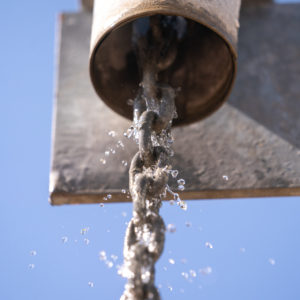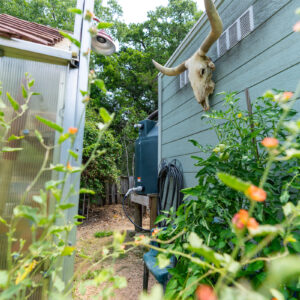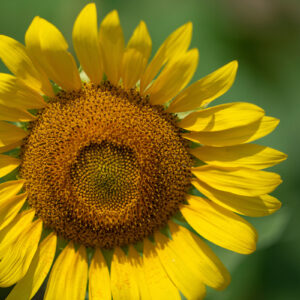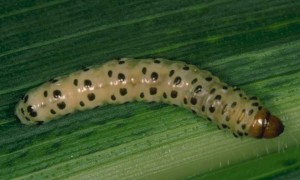
Southwestern Corn Borer
Photo source: Frank Peairs
See Sorghum Insect Photos by Phil Sloderbeck, Department of Entomology, Texas A&M University for more images.
Sugarcane Borer
Diatraea saccharalis (Fabricius)
Neotropical Borer
D. lineolata (Walker)
Southwestern Corn Borer
D. grandiosella (Dyar)
Description and Biology
Sorghum in the United States usually is not seriously infested by stalk borers. However, stalk borers are often key insect pests of sorghum in other areas of the world. Larvae of stalk borer species resemble each other in appearance and have similar biologies. A fully-grown larva is about 25 mm long, with a brown head and thorax, and white- to yellow-colored body (Color Plate 20). Most body segments have conspicuous round, brown or black spots. Spots are lighter colored or absent on mature, overwintering larvae.
The insects pass the winter as fully-grown larvae in cells inside stalks or root crowns that remain after the crop is harvested. Larvae pupate in the spring, and adults emerge a few weeks later. The buff-colored moths lay clusters of elliptical to oval-shaped, flattened eggs that overlap like fish scales or shingles on leaves of host plants. Eggs hatch in three to seven days. The larval stage lasts about twenty-five days and the pupal stage about ten. There are one to three generations a year.
Symptoms & Damage
Young larvae feed for a few days on leaves or the leaf axis. Older larvae tunnel into and bore up and down the pith of the stalk. Borer-infested stalks are smaller in diameter, and may lodge. Boring by larvae often causes the peduncle to break and panicle to fall. Injury by borers makes the plant more susceptible to stalk rot pathogens.
Monitoring
Determining the presence of stalk borers requires careful examination of sorghum plants. A small hole near the leaf axis indicates a larva entered the stalk. Stalks must be split to see the larvae. Eggs on the leaves are difficult to find. Clusters containing twelve to twenty small, individual eggs may be on the top or underside of leaves, depending on the borer species. Abundance of eggs and small larvae must be assessed and insecticide applied before larvae bore into stalks.
Management
Planting sorghum early is an important management tactic. Plowing to break stubble and bury crop residues soon after harvest destroys overwintering larvae by exposing them to cold temperatures. Chemical control rarely is justified.
